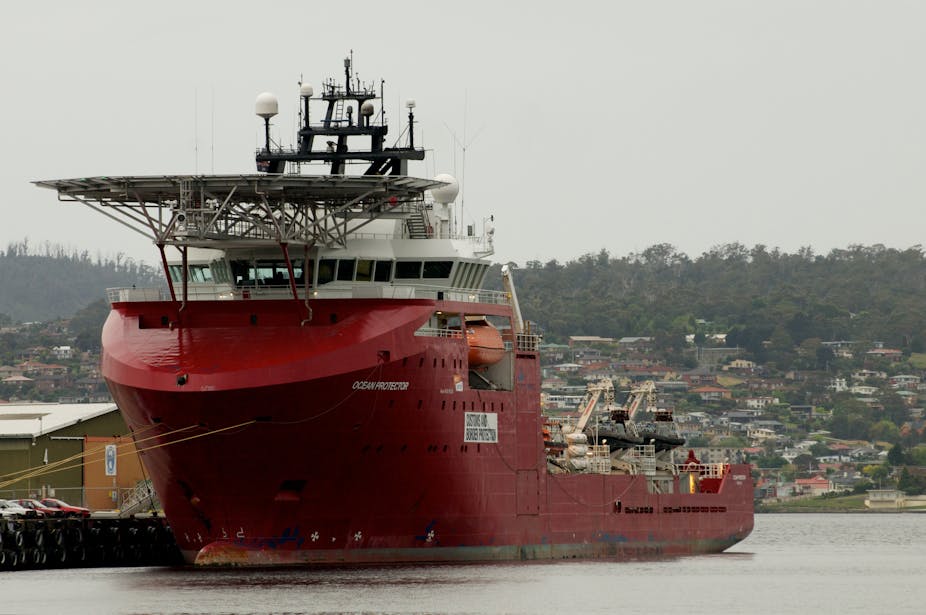Lawyers for 153 Sri Lankan asylum seekers on a boat intercepted by the Australian government applied for a full bench of the High Court to hear its case on August 5 at a directions hearing on Friday.
Whereas normally such asylum seekers are taken ashore to be processed, these people have been detained on a customs vessel in what are reportedly prison-like conditions. The government’s lawyers told the High Court today the asylum seekers will remain on the vessel until the case is resolved.
The Australian government has not released as much information about the interception as we would expect of an accountable and transparent democracy. It appears that an ACV Ocean Protector intercepted the vessel outside Australian territorial waters west of the Cocos Islands. Under the circumstances, Australia’s obligations under international refugee law are complicated by the law of the sea.
A divided and overlapping sea territory
The oceans are legally divided into a coastal state’s territorial seas (12 nautical miles from shore), the contiguous zone (the next 12 miles), the nation’s exclusive economic zone (200 miles) and beyond that the high seas over which none have jurisdiction.
Australia could not intercept the vessel on the high seas. Here, the boat has every right to navigate freely under international law, subject to very few exceptions (piracy, interception treaty). Vessels enjoy a right to innocent passage even in a state’s territorial waters.
However, the entry of alien migrants is not innocent passage, and a state is free to prevent the violation of its immigration laws in the contiguous zone.
The international law protecting refugees does not require coastal states to grant entry to alien migrants approaching its shores. Nevertheless, international refugee law does oblige states not to return (refoule) individuals to countries in which they may be persecuted, or face torture or serious harm.
There are two approaches to the question as to when this obligation arises. The restrictive approach argues that it applies only when the asylum seeker has entered the state’s territory. The broader approach suggests that it applies even beyond the state’s territory, and territorial sea borders.
If the restrictive approach is preferred, the Australian government’s actions in preventing the vessel entering its territorial waters may have been designed to avoid its obligations under international law. Merely barring entry without actually returning boat people is permitted to every sovereign state.
However, refoulement may be either direct or indirect. Australia is as responsible for returning asylum seekers to face persecution or harm whether it returns them itself or, in forbidding them entry, it in effect compels them to return to their home state.
Further, Australia has exercised its jurisdiction over these asylum seekers and subjected them to its laws. Its obligation not to return these asylum seekers arises on that basis alone.
In attempting to avoid its non-return obligations under international law, the government has put itself in a quandary. Taking these boat people onto its customs patrol vessel brings them, under international law, into Australian territory. This is because, at international law, the vessel is an extension of the state whose flag it flies.
Questions about processing
Assuming the government followed up its at-sea interception with at-sea preliminary interviewing, or even sea-based assessment of refugee claims, was this valid under international law?
The best information we have regarding interceptions at sea is concerning. The secrecy that surrounds these interceptions makes it difficult to assess their consequences.
Interception also replaces a legal process of assessment overseen by independent courts with summary treatment of vulnerable persons and obscure executive action.

